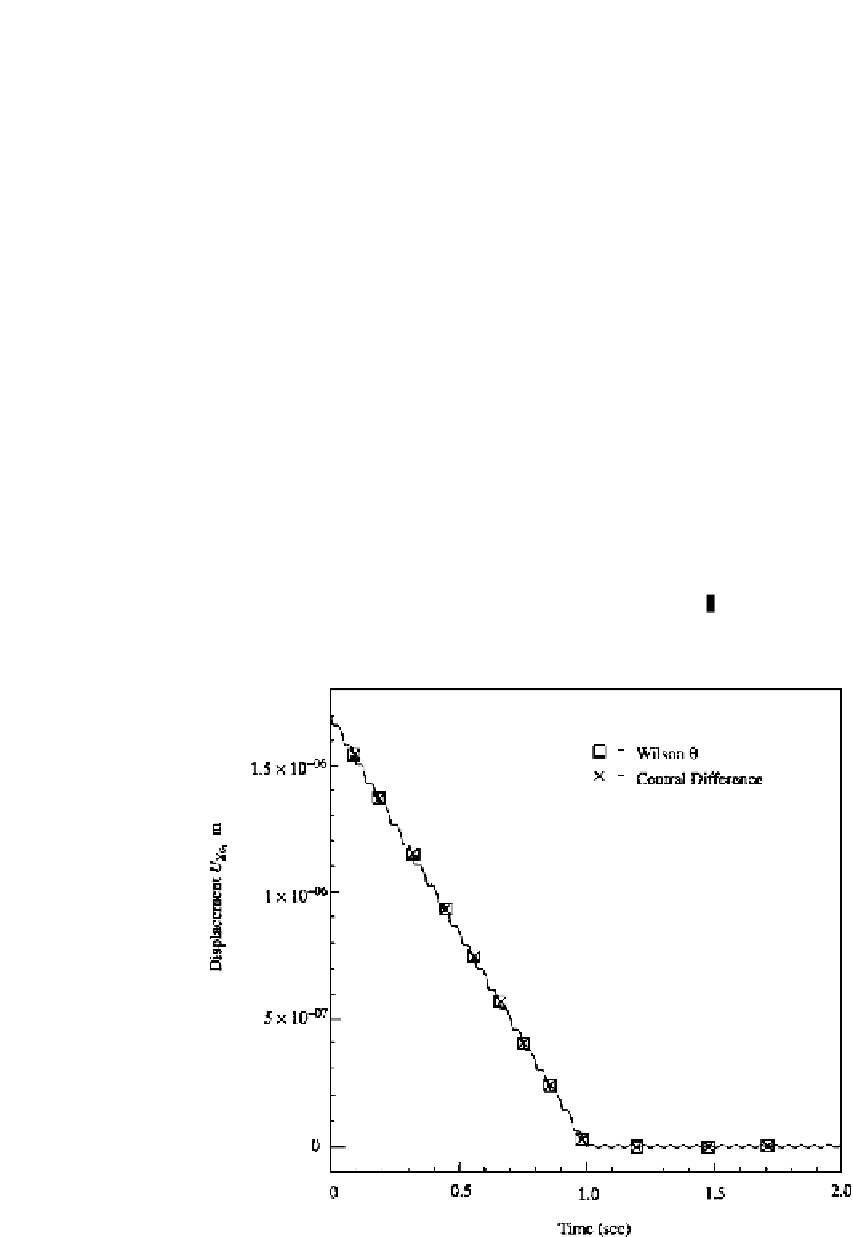Information Technology Reference
In-Depth Information
proportional to the mass matrix, 0.000625
M
. The external force is applied at node
b
in
the
X
direction, with the time-dependence shown in Fig. 10.8. The central difference and
Wilson
θ
methods are used to calculate the transient response of the beam.
Central Difference Method
Use Eq. (10.100) to calculate the response. From Eq. (10.109), the critical time step is
2
2
3686
10
−
3
t
crit
=
max
=
032
=
0
.
5426
×
ω
.
where
ω
max
is taken to be
ω
6
in Eq. (1) of Example 10.7. Different time steps
(
t
=
10
−
3
sec) are used in the calculation. The displacement of node
c
in the
X
direction is shown in Figs. 10.12 and 10.13. It can be seen that for the time step 0
10
−
3
,
0
.
5
×
t
=
0
.
6
×
10
−
3
,
.
5
×
10
−
3
,
the integration
is very unstable. The accumulated error makes the absolute value of the results extremely
large.
the integration is stable up to 0.012 sec, but for the time step 0
.
6
×
Wilson
θ
Method
The calculations use Eq. (10.124). Employ the same time steps as used above for the central
difference method, as well as
10
−
2
The displacement of node
c
in the
X
direction
is shown in Figs. 10.12, 10.13 and 10.14. The results are stable.
t
=
0
.
1
×
.
FIGURE 10.12
Comparison of the central difference method with the Wilson
10
−
3
θ
method (
t
=
0
.
5
×
sec).









Search WWH ::

Custom Search